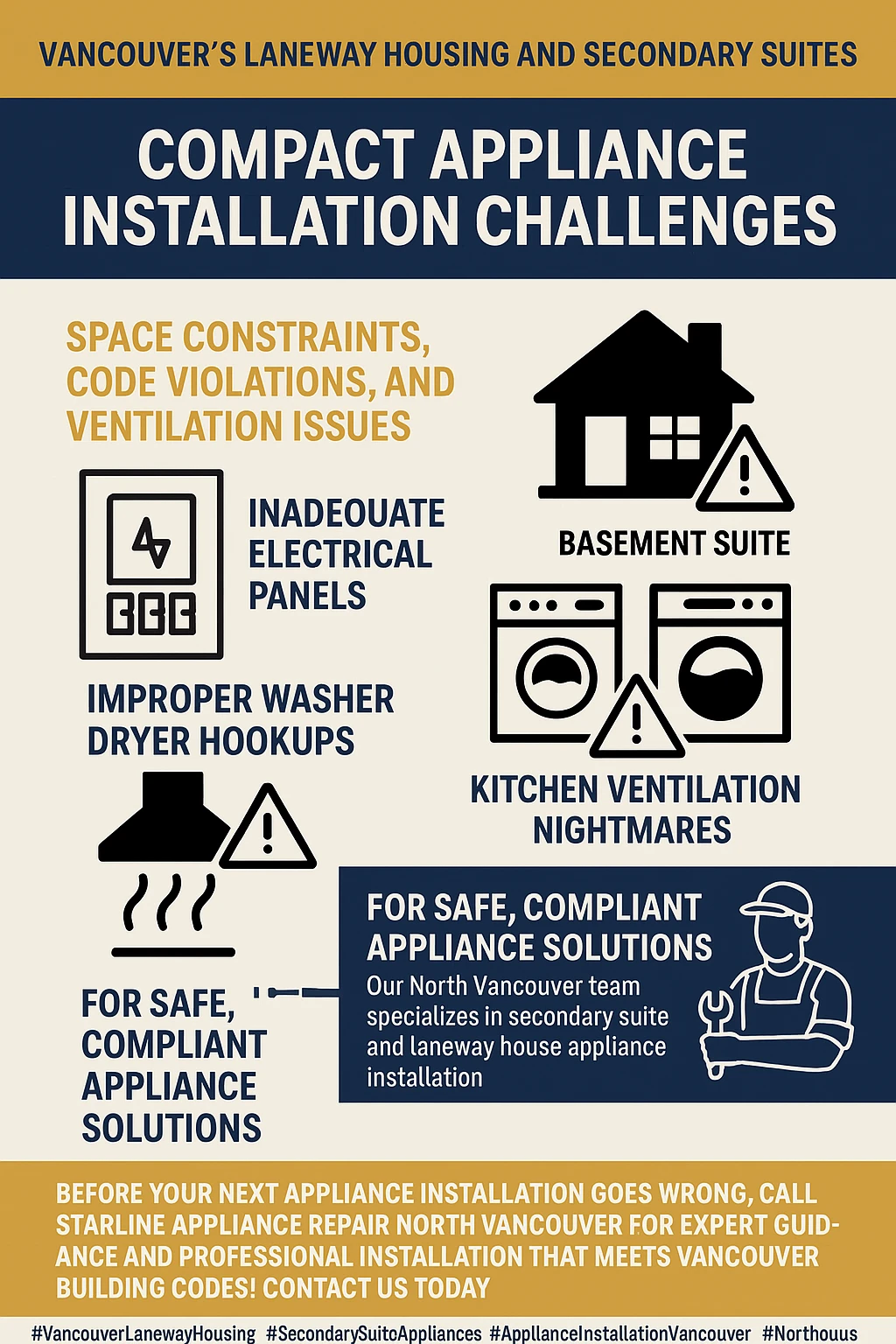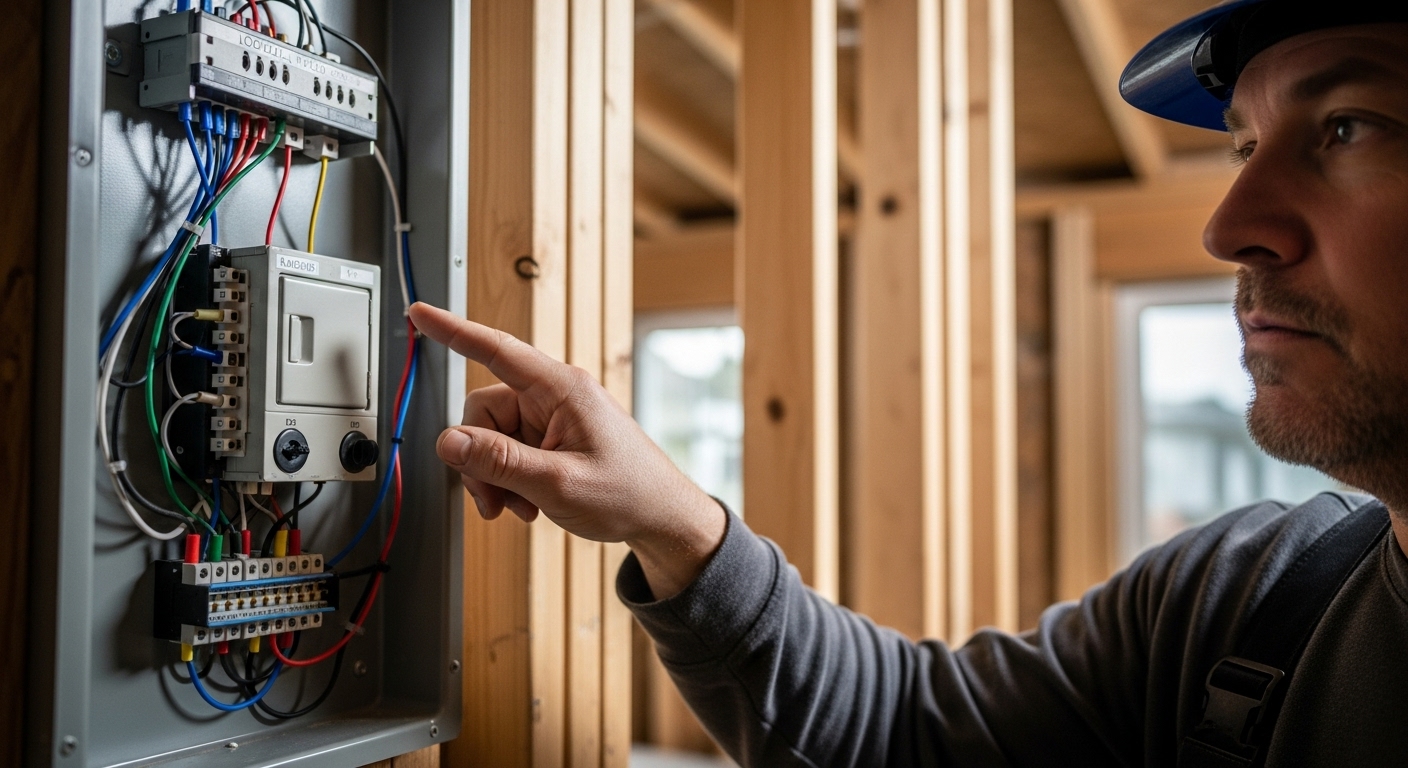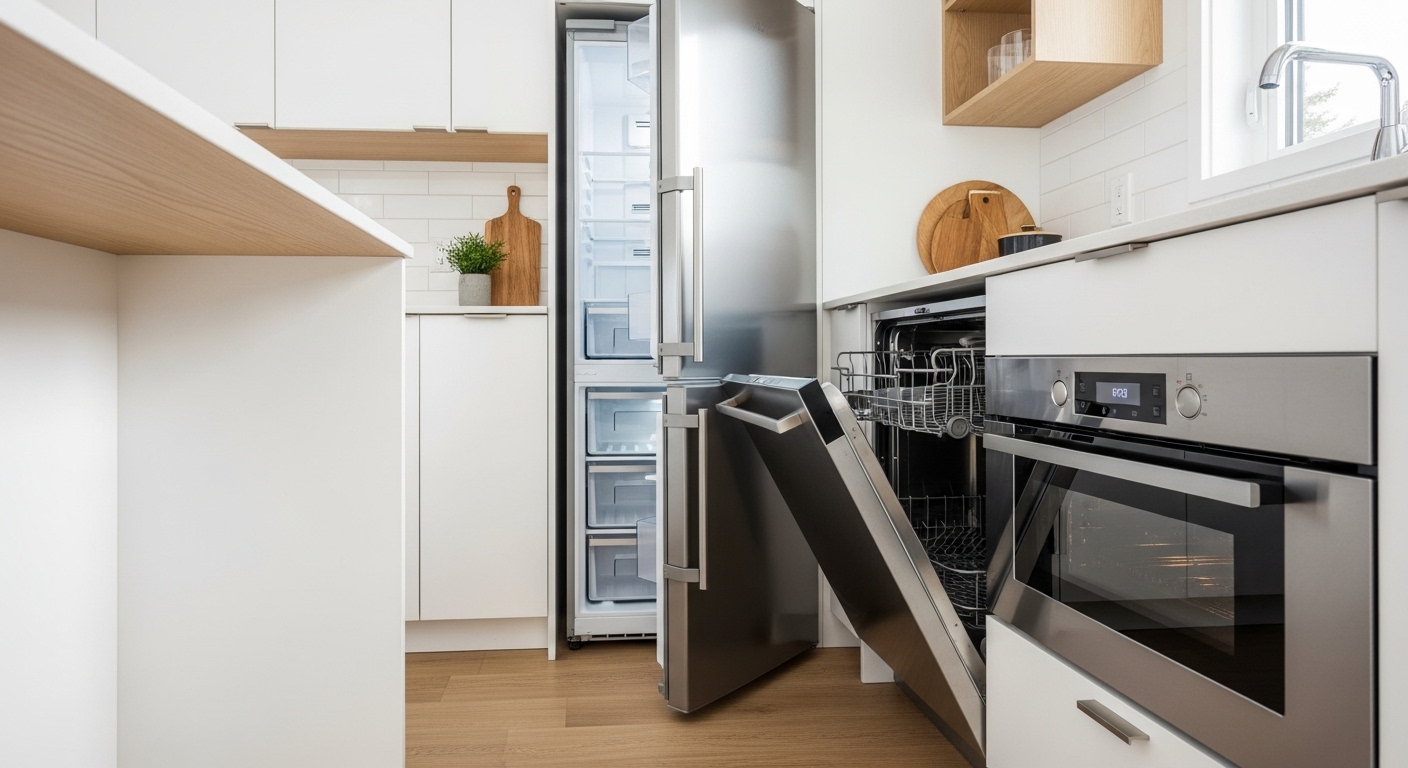How Vancouver’s New Laneway Housing and Secondary Suites Are Creating Appliance Installation Nightmares: Electrical Code Violations, Space Constraints, and Safety Issues Every Property Owner Must Address
Struggling with appliance installation challenges in your new Vancouver laneway house or secondary suite? You’re not alone—these compact housing units are creating unprecedented electrical code violations, space constraint nightmares, and safety issues that property owners never saw coming.Vancouver’s booming laneway housing and secondary suite market has created a critical infrastructure challenge that property owners often overlook: appliance installation compliance. As the city approved laneway houses in 2009 and expanded them through updated zoning in 2023, thousands of homeowners have added secondary dwellings to their properties without fully understanding the complex electrical codes, utility connections, and space constraints that appliance installations demand. From electrical panel overloads to improper ventilation ductwork to washer/dryer hookup violations, the rapid expansion of compact housing units has outpaced homeowner education about the intricate safety requirements.The reality is harsh: most Vancouver homes built before the secondary suite wave operate on 60-100 amp electrical services that simply cannot support two full kitchens and laundry setups. Meanwhile, laneway homes averaging 300-1,200 square feet force property owners into specialized appliance categories that cost 20-40% more than standard models. Add in BC Hydro setback complications, construction-phase appliance damage, and insurance implications of code violations, and you’ve got a perfect storm of expensive surprises. This article addresses the critical appliance installation issues every Vancouver property owner with a laneway house or secondary suite must understand to protect their investment, their family’s safety, and their legal compliance.
Key Outtakes:
- Electrical Service Demands: Secondary suites and laneway houses typically require minimum 100-amp service for dual appliances (two ranges and two dryers), yet many existing homes operate on outdated 60-100 amp systems that cannot support both the primary dwelling and secondary unit.
- Dedicated Circuits Non-Negotiable: BC Code mandates separate dedicated circuits for high-wattage appliances like ranges, dryers, dishwashers, and microwave ovens, violations of which create fire hazards and code non-compliance.
- Space Constraints Require Specialized Appliances: Laneway homes typically range from 300-1,200 square feet, necessitating compact, space-efficient appliances that are more difficult to install properly in confined kitchens and laundry areas.
- Ventilation System Failures Drive Non-Compliance: Kitchen exhaust hood installation and dryer vent placement must comply with NFPA 96 standards and remain 10 feet from property lines, yet many installations violate these clearance requirements.
- Construction-Phase Damage Often Goes Unnoticed: Appliances installed during construction phases are exposed to electrical surges, dust infiltration, and moisture damage weeks before homeowner possession, with issues appearing only after warranties expire.

Understanding Vancouver’s Electrical Code Requirements for Secondary Suites and Laneway Homes
When Vancouver homeowners dive into secondary suite or laneway house projects, they quickly discover that electrical infrastructure becomes the most expensive and complex challenge. The city’s electrical bylaws don’t just suggest minimum standards—they mandate specific amperage requirements that catch most property owners completely off guard.The City of Vancouver’s electrical bylaws require that when a primary dwelling and secondary suite both operate electrical ranges and dryers, the minimum electrical service is typically 100 amps. However, this requirement often catches property owners by surprise because homes built before the secondary suite wave may have only 60 or 80-amp services. The Vancouver Electrical Load Calculation form for “One-Family Dwelling with or without Secondary Suite in combination with Laneway House” requires detailed calculations based on living area, appliance loads, and HVAC systems. Many properties attempting to legalize existing suites or add new secondary units discover that their electrical infrastructure cannot support both dwellings, requiring costly panel upgrades that can range from $5,000-$15,000 before appliance installation even begins. For homeowners who thought they were simply adding a small rental unit, this electrical reality check often doubles or triples their anticipated project costs.  The 2023 expansion of laneway house maximum sizes in Vancouver to allow more multi-bedroom units has dramatically increased electrical load demands, directly contributing to the recent electrical compliance issues and stop-work orders on projects exceeding setback requirements. What seemed like a simple housing addition suddenly requires the same electrical infrastructure planning as building an entirely new home. Property owners must engage licensed electricians early in the design phase, not after construction begins, to avoid costly redesigns and permit delays.Vancouver’s Electrical Bylaw 5563 allows specific configurations for electrical service in secondary suites, but the rules are nuanced and frequently misunderstood. If the principal dwelling unit and secondary suite share a single meter and panelboard, the panelboard must be located in a common area accessible to all occupants. Alternatively, if the property owner installs separate meters, each dwelling can have its own panelboard, but utility connections, coordination with BC Hydro, and compliance verification become significantly more complex. This distinction matters enormously for appliance installation because a shared panelboard may not have sufficient circuit capacity for independent appliance operation, while separate panelboards require additional infrastructure costs and extended permitting timelines.BC Hydro arrangements must be confirmed before electrical permit applications are submitted, and clearances from BC Hydro equipment are strictly regulated—laneway houses must maintain greater than 6 meters clearance from pole-mounted transformers and greater than 3 meters from high-voltage overhead conductors. These setback requirements often eliminate viable building locations on smaller lots, forcing property owners back to the drawing board after substantial planning investment. The coordination required between the city’s permitting department, BC Hydro, and licensed electrical contractors creates a complex approval process that can extend project timelines by months.Ground Fault Circuit Interrupter (GFCI) protection is required for all receptacles installed within 1.5 meters of sinks, bathtubs, or shower stalls in secondary suites. In compact laneway kitchens and bathrooms where space efficiency dictates tight appliance placement, nearly every outlet may fall within this 1.5-meter requirement, yet many installers fail to implement Class A GFCI protection properly. The Canadian Electrical Code Rule 26-700 specifies that GFCI protection must be of the Class A type, which means the device shuts off power when as little as 0.005 amp is leaking. Failure to comply creates both immediate safety hazards for occupants and grounds for permit denial during inspections. Many homeowners discover these GFCI requirements only when their electrical inspection fails, forcing expensive rewiring to bring installations into compliance.Kitchen counter receptacles in secondary suites must be supplied by two separate appliance circuits minimum, with kitchen counter duplex receptacles either individually wired on separate branch circuits or collectively wired on multi-wire branch circuits per Vancouver Electrical Bylaw Section 7.3.5. This means that even in a tiny laneway kitchen with minimal counter space, the electrical infrastructure must support the same circuit requirements as a full-size home kitchen. The complexity and cost of meeting these requirements in compact spaces often exceeds what homeowners budgeted for the entire electrical portion of their project.
The 2023 expansion of laneway house maximum sizes in Vancouver to allow more multi-bedroom units has dramatically increased electrical load demands, directly contributing to the recent electrical compliance issues and stop-work orders on projects exceeding setback requirements. What seemed like a simple housing addition suddenly requires the same electrical infrastructure planning as building an entirely new home. Property owners must engage licensed electricians early in the design phase, not after construction begins, to avoid costly redesigns and permit delays.Vancouver’s Electrical Bylaw 5563 allows specific configurations for electrical service in secondary suites, but the rules are nuanced and frequently misunderstood. If the principal dwelling unit and secondary suite share a single meter and panelboard, the panelboard must be located in a common area accessible to all occupants. Alternatively, if the property owner installs separate meters, each dwelling can have its own panelboard, but utility connections, coordination with BC Hydro, and compliance verification become significantly more complex. This distinction matters enormously for appliance installation because a shared panelboard may not have sufficient circuit capacity for independent appliance operation, while separate panelboards require additional infrastructure costs and extended permitting timelines.BC Hydro arrangements must be confirmed before electrical permit applications are submitted, and clearances from BC Hydro equipment are strictly regulated—laneway houses must maintain greater than 6 meters clearance from pole-mounted transformers and greater than 3 meters from high-voltage overhead conductors. These setback requirements often eliminate viable building locations on smaller lots, forcing property owners back to the drawing board after substantial planning investment. The coordination required between the city’s permitting department, BC Hydro, and licensed electrical contractors creates a complex approval process that can extend project timelines by months.Ground Fault Circuit Interrupter (GFCI) protection is required for all receptacles installed within 1.5 meters of sinks, bathtubs, or shower stalls in secondary suites. In compact laneway kitchens and bathrooms where space efficiency dictates tight appliance placement, nearly every outlet may fall within this 1.5-meter requirement, yet many installers fail to implement Class A GFCI protection properly. The Canadian Electrical Code Rule 26-700 specifies that GFCI protection must be of the Class A type, which means the device shuts off power when as little as 0.005 amp is leaking. Failure to comply creates both immediate safety hazards for occupants and grounds for permit denial during inspections. Many homeowners discover these GFCI requirements only when their electrical inspection fails, forcing expensive rewiring to bring installations into compliance.Kitchen counter receptacles in secondary suites must be supplied by two separate appliance circuits minimum, with kitchen counter duplex receptacles either individually wired on separate branch circuits or collectively wired on multi-wire branch circuits per Vancouver Electrical Bylaw Section 7.3.5. This means that even in a tiny laneway kitchen with minimal counter space, the electrical infrastructure must support the same circuit requirements as a full-size home kitchen. The complexity and cost of meeting these requirements in compact spaces often exceeds what homeowners budgeted for the entire electrical portion of their project.
The Space Constraint Crisis—Why Compact Appliances Create Installation Nightmares
 Moving from electrical infrastructure challenges to the practical realities of appliance placement, Vancouver’s compact housing units present a unique set of physical constraints that standard appliances simply weren’t designed to handle. The space limitations create cascading problems that affect everything from appliance selection to installation complexity to long-term functionality.Laneway homes in Vancouver are restricted to 1,000 square feet of floor area maximum, with most ranging between 300-1,200 square feet total. This creates a severe constraint for kitchen appliances because standard residential appliances are designed for typical home kitchens with 36-42 inches of counter space and standard spacing between utilities. A typical refrigerator is 36 inches wide and 24-30 inches deep, consuming enormous relative space in a laneway kitchen. When property owners attempt to install standard 36-inch ranges or full-size dishwashers in these compact spaces, the appliance doors cannot open fully, ventilation ducts cannot be properly routed, and water/gas connections require expensive modifications. The specialized compact appliances designed for small spaces (drawer dishwashers, slimline refrigerators, counter-depth models) cost 20-40% more than standard models and often have limited availability through standard retailers.Research indicates that oversized or poorly placed appliances are the biggest culprits in small kitchen failures, with full-depth refrigerators in narrow walkways and full-size dishwashers blocking oven doors creating frustrating, non-functional spaces
Moving from electrical infrastructure challenges to the practical realities of appliance placement, Vancouver’s compact housing units present a unique set of physical constraints that standard appliances simply weren’t designed to handle. The space limitations create cascading problems that affect everything from appliance selection to installation complexity to long-term functionality.Laneway homes in Vancouver are restricted to 1,000 square feet of floor area maximum, with most ranging between 300-1,200 square feet total. This creates a severe constraint for kitchen appliances because standard residential appliances are designed for typical home kitchens with 36-42 inches of counter space and standard spacing between utilities. A typical refrigerator is 36 inches wide and 24-30 inches deep, consuming enormous relative space in a laneway kitchen. When property owners attempt to install standard 36-inch ranges or full-size dishwashers in these compact spaces, the appliance doors cannot open fully, ventilation ducts cannot be properly routed, and water/gas connections require expensive modifications. The specialized compact appliances designed for small spaces (drawer dishwashers, slimline refrigerators, counter-depth models) cost 20-40% more than standard models and often have limited availability through standard retailers.Research indicates that oversized or poorly placed appliances are the biggest culprits in small kitchen failures, with full-depth refrigerators in narrow walkways and full-size dishwashers blocking oven doors creating frustrating, non-functional spaces

